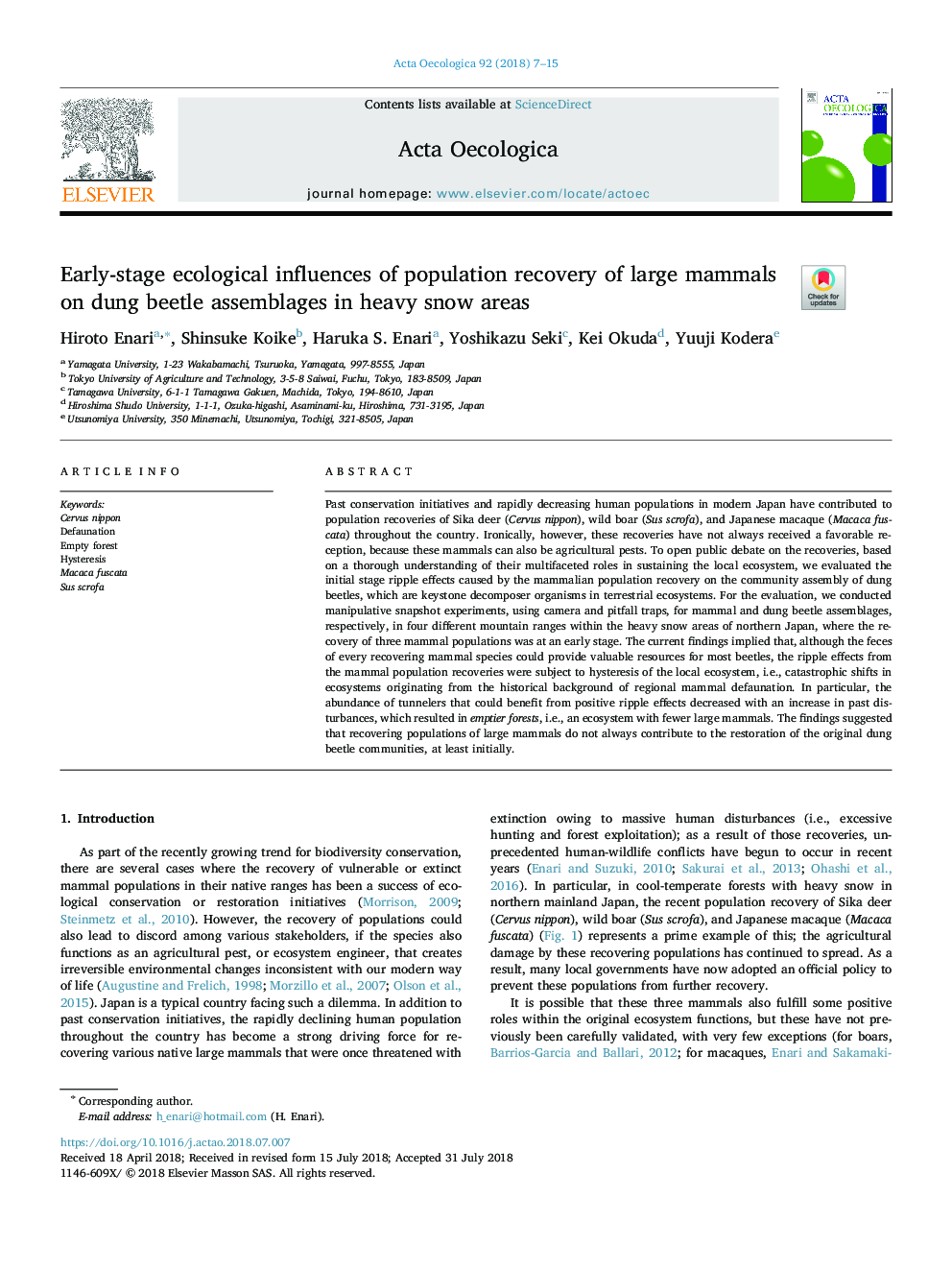| Article ID | Journal | Published Year | Pages | File Type |
|---|---|---|---|---|
| 8846433 | Acta Oecologica | 2018 | 9 Pages |
Abstract
Past conservation initiatives and rapidly decreasing human populations in modern Japan have contributed to population recoveries of Sika deer (Cervus nippon), wild boar (Sus scrofa), and Japanese macaque (Macaca fuscata) throughout the country. Ironically, however, these recoveries have not always received a favorable reception, because these mammals can also be agricultural pests. To open public debate on the recoveries, based on a thorough understanding of their multifaceted roles in sustaining the local ecosystem, we evaluated the initial stage ripple effects caused by the mammalian population recovery on the community assembly of dung beetles, which are keystone decomposer organisms in terrestrial ecosystems. For the evaluation, we conducted manipulative snapshot experiments, using camera and pitfall traps, for mammal and dung beetle assemblages, respectively, in four different mountain ranges within the heavy snow areas of northern Japan, where the recovery of three mammal populations was at an early stage. The current findings implied that, although the feces of every recovering mammal species could provide valuable resources for most beetles, the ripple effects from the mammal population recoveries were subject to hysteresis of the local ecosystem, i.e., catastrophic shifts in ecosystems originating from the historical background of regional mammal defaunation. In particular, the abundance of tunnelers that could benefit from positive ripple effects decreased with an increase in past disturbances, which resulted in emptier forests, i.e., an ecosystem with fewer large mammals. The findings suggested that recovering populations of large mammals do not always contribute to the restoration of the original dung beetle communities, at least initially.
Related Topics
Life Sciences
Agricultural and Biological Sciences
Ecology, Evolution, Behavior and Systematics
Authors
Hiroto Enari, Shinsuke Koike, Haruka S. Enari, Yoshikazu Seki, Kei Okuda, Yuuji Kodera,
